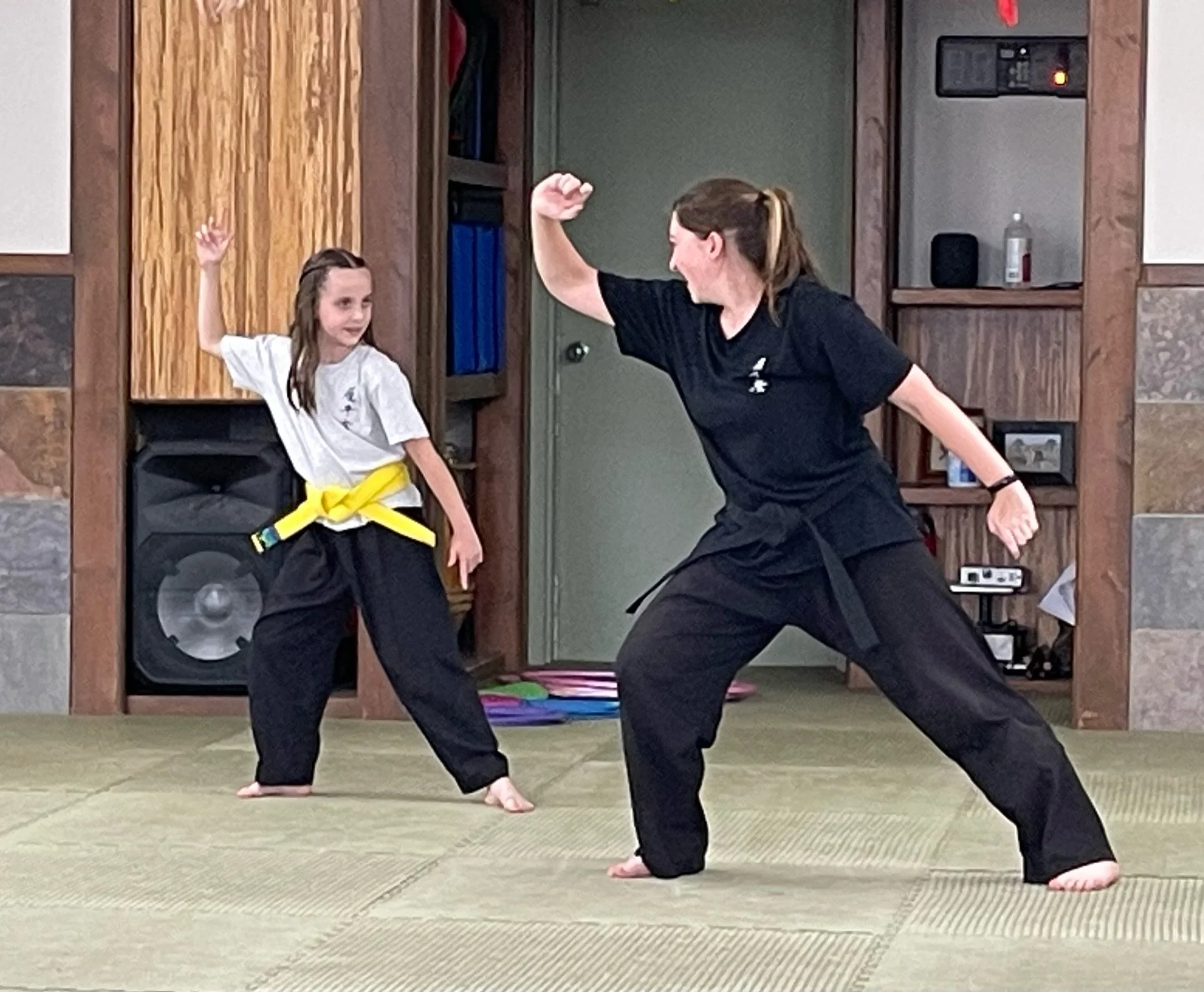Stances Are Transitions!
Sifu Rybek said something during Monday's class that as soon as she said it, I wanted to run and grab my notebook so I could write it down accurately. After class I was trying to remember as best I could and once it got filtered through my brain and my memory here is what I had.
"Stances do not become stances until they serve you."
Meaning, you can stand in a perfect bow stance, meeting all the "requirements" (hips facing forward, knee over ankle, shoulders ahead of hips, etc.) but if you're settling into it before you throw your punch that is not a bow stance you're just standing in a specific way. Stances ARE transitions. They don't exist as a snapshot; I've always thought of them as a static thing, the tiny pause in movement that happens in the flow between techniques, but now I'm realizing that the "transitions" between moves are not a separate thing from the stance, the stance is motion!
And then I start thinking oh that makes the whole thing so much more complicated because it's not just checking my weight distribution, or the angle of my hips, pausing in the middle of a form, or the middle of a move to run through my checklist of things that I think define any stance, Instead it's all those micro motions that happen as you settle into a stance. Which can all start off from different places depending on which strike you're throwing or what stance you're coming from, which makes it seem like there are hundreds and thousands possible combinations, thousands of "different" types of bow stances. But the core concepts between them are always the same, like waiting to settle into the stance until the moment of impact, or staying centered, or having proper alignment that supports transfer of power.
All those "requirements" of the stance are still important, but only in the sense that they help me to generate, absorb, and transfer power, not because they are "correct". All those things I think define a bow stance, like my shoulders being ahead of my hips, are just tools to help me understand how energy moves through my skeleton, and how to align it in a way that is advantageous for me. Once I understand that stance in a static moment, I can start exploring that idea in the context of motion, which is where the art comes into martial arts!
Kayley Burke
